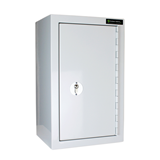Published in The Lancet, the ground-breaking study led by Sally Tracy, Professor of Midwifery at the University of Sydney, recruited 1748 pregnant women of all risk types from Sydney's Royal Hospital for Women and Brisbane's Mater Mother's Hospital and allocated them to receive either caseload midwifery care (871) or standard maternity care (877).
The study found more women in caseload midwifery experienced an unassisted vaginal birth without pharmacological analgesia, while fewer women experienced an elective caesarean.
While the trial findings did not show a significant difference in the rate of caesarean sections between either group, the overall rate fell by more than 20 per cent from pre-trial levels.
Newborn infants in both groups achieved similar physical assessment scores (Apgar scores). A slightly lower number of pre-term births and neonatal intensive care admissions among the midwifery caseload group was not statistically significant.
Important secondary findings of the study include: 30 per cent more spontaneous onset of labour; less induction of labour; less severe blood loss; and more likelihood of breastfeeding at discharge from hospital.
The overall median cost of birth per woman was AU$566.74 less with caseload midwifery than with standard care.
Professor Sally Tracy said the study confirmed for the first time that caseload midwifery care is feasible for women of all risk and cost effective at all levels of care.
"Given the limited information available about the cost of maternity services in Australia, it's significant to find that caseload midwifery produces a saving of $566.74 for each woman who gave birth in the public hospital," she said.
Professor Tracy said the study refuted the common misconception that one-to-one caseload midwifery care was expensive.
"Caseload midwifery care has been largely overlooked because of the incorrect belief that the service will be too expensive and that the model is not safe for complex pregnancies.
"Our randomised trial showed that caseload care can achieve similar outcomes to standard care — and it costs the public purse significantly less.
"Given that maternity is one of the most frequent causes of hospitalisation in Australia today, caseload midwifery could play a major role in the future in reducing public health expenditure.
"Our study found that caseload midwifery appeared to alter some of the pathways that recurrently contribute to increased obstetric intervention.
"Caseload midwifery care works on the assumption that women will labour more effectively, need to stay in hospital less time and feel a stronger sense of satisfaction and personal control if they have the opportunity to get to know their midwife at the beginning of pregnancy."
Professor Alec Welsh, co-author and obstetrician, and director of the Australian Centre for Perinatal Science at UNSW, said policy makers should not view one-on-one midwife care as an expensive, boutique service and pregnant women should be made aware of the benefits of such schemes.







